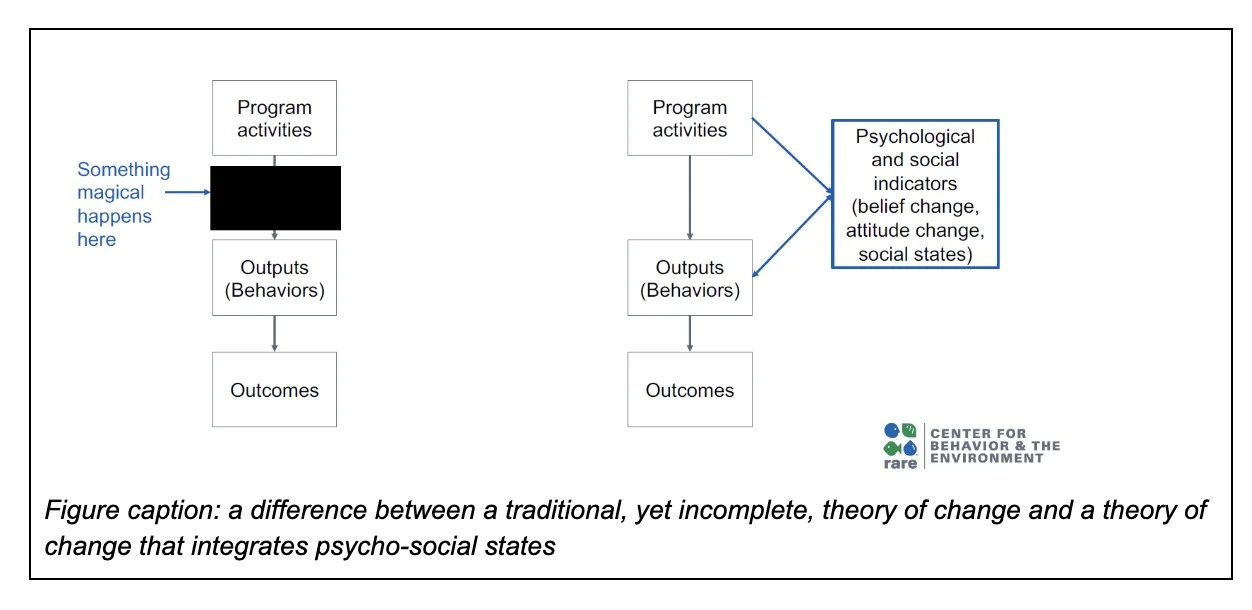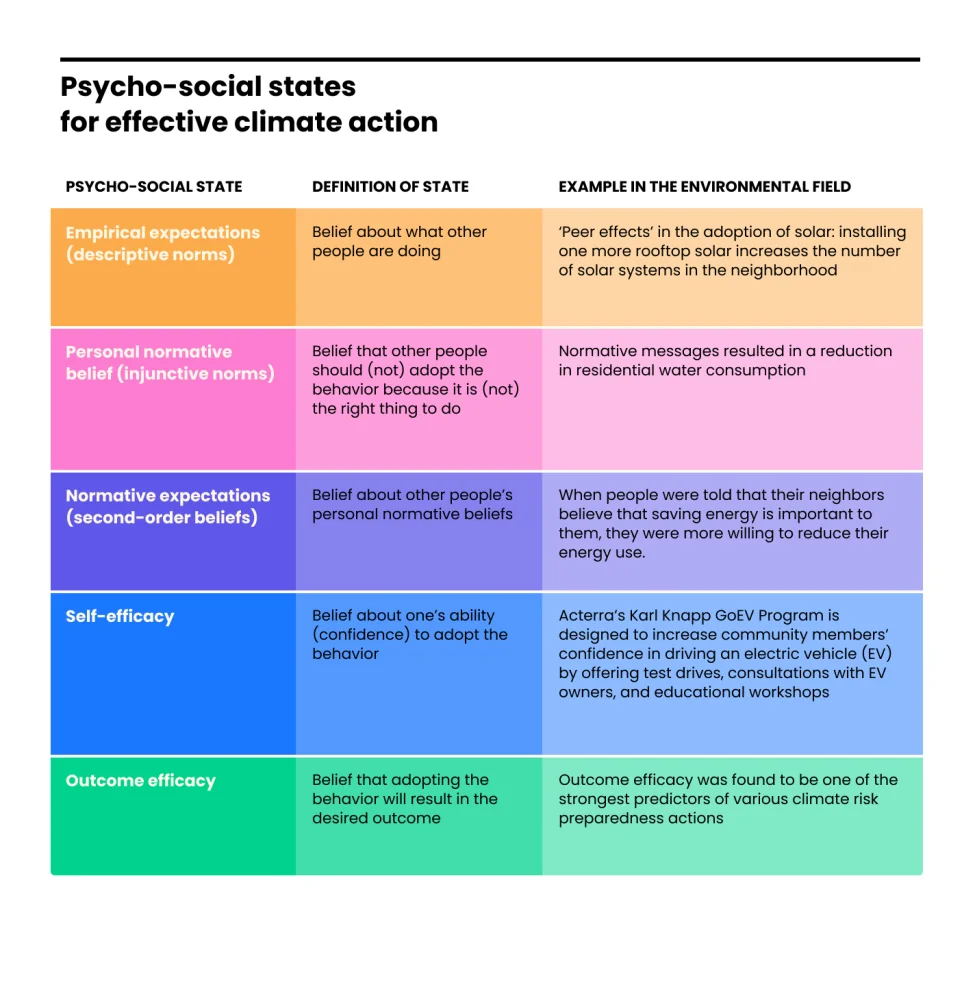If you’ve had a go at, or even considered, running a campaign on climate action, you might’ve noticed that it is not an easy feat. And you’re not alone. Few climate action campaigns have been 100% effective.
The good news is that with the help of behavioral science, this could soon become an issue of the past. But the literature is expansive, and we’re running short of time to tackle the climate crisis. So we’ve prepared this primer, to help you identify how to bring the basics of behavior science to your campaign design.
A boom in behavioral solutions
Behavior change designers, policy-makers, and the public and private sectors are increasingly deploying behaviorally-informed solutions to address a myriad of challenges facing society. Behavioral interventions that leverage an understanding of human decision-making have already benefited us. In the US alone, they’ve helped save 25+ terawatt-hours of energy (that’s enough to power all the households in Dallas, Texas for 3.5 years!) and increased retirement savings rates for 15+ million Americans. Behavioral solutions have gone as far as showing promise in fighting one of the world’s most lethal infectious diseases: tuberculosis.
Future behavioral interventions could shape what we eat, how we travel, or what energy we use to cool and heat our homes, all of which have been shown to have a high impact on carbon emissions when scaled up to the population level. While the application of behavioral solutions is expected to grow, many well-intended campaigns have inadvertently failed in achieving their desired behavioral change. So, how can we design more effective campaigns that lead to desired behaviors among our audience?
The missing piece
The success of a behavioral campaign rests on a clear understanding of the psychological and social (psycho-social) states as well as the decision environment of people whose behavior we aim to change. Psycho-social states encompass a person’s beliefs, values, attitudes, social expectations, norms, and the social context that are expected to be changed by campaign activities.
Effective behavior change campaigns often require their designers to be aware of these states and sketch activities that are expected to directly change someone’s state or mindset, which in turn leads to behavior change and the desired campaign outcomes.
However, historically, behavior change campaigners were not able to fully understand what worked in a campaign and what didn’t go as planned. This was due to the presence of a mysterious black box in many traditional theories of change. When psychological and social changes that need to occur to support behavioral changes are not explicitly identified and captured, it is difficult to identify why certain campaign elements may not have performed as intended.

A difference between a traditional, yet incomplete, theory of change and a theory of change that integrates psycho-social states.
A theory of change that incorporates psycho-social states and social factors provides program designers with a clear roadmap of the causal assumptions between program activities, intended changes in a target audience’s psychological and social states, and the desired campaign outcomes. An improved theory of change encourages campaigners to focus on the motivations and barriers driving behavior, resulting in a more thoughtful program design that leverages the most powerful levers to change behavior and make it stick.
Psycho-social states for effective climate action

These five key psycho-social states were proven to be strong determinants of upstream behavior change.
Successful behavioral interventions often seek to change multiple states to address behavioral barriers and motivations of their target audience throughout the behavior change journey.
Rare’s Climate Culture program has identified five key psycho-social states that were proven to be strong determinants of upstream behavior change. For each, we also share an example of a campaign that draws on these states:
- Descriptive norms: belief about what other people are doing. Climate actions taken by the Count Us In’s global community are aggregated, providing the community with a powerful social cue that people around them are taking climate action.
- Injunctive norms: the belief that other people should (not) adopt the behavior because it is (not) the right thing to do. Normative messages led to a reduction in residential water use.
- Normative expectations: belief about other people’s personal normative beliefs. When people were told that their neighbors believed that saving energy is important to them, they were more willing to reduce their energy use.
- Self-efficacy: belief about one’s ability (confidence) to adopt the behavior. Acterra’s Karl Knapp GoEV Program is designed to increase community members’ confidence in driving an electric vehicle (EV) by offering test drives, consultations with EV owners, and educational workshops.
- Outcome efficacy: the belief that adopting the behavior will result in the desired outcome (e.g., positive climate outcome). Outcome efficacy is one of the strongest predictors of various climate risk preparedness actions.
Other common psycho-social states that are important enablers or leading indicators of climate action often include the role of emotions, identity, and the perceived or real complexity of adopting the behavior.
A recently launched Climate Culture Index aims to set the baseline for understanding current climate action and states and can inform how we design interventions that help people adopt high-impact behaviors.
Understanding key states relevant to driving climate action can offer valuable insights for media and government, and empower climate activists, advocates, and allies to design behavioral science-driven interventions which are more likely to move people along the journey from inaction to action. Ultimately, knowing where the public is (and where they think other people are) can help campaign designers strategically build the critical mass needed to shift the behavior for the better and drive societal change.
Adding your missing piece
To develop a successful behavioral campaign, change makers need to understand key psychological and social determinants of their target behavior.
For many behavior change practitioners and organizations, this is a doable task, as there are many design thinking tools and frameworks (like these and these) that help better understand people and their behavior. For example, a Behavior-Centered Design approach asks a designer to collect data on the core actors’ motivations, barriers, and context for the target behavior via a range of methods, including behavioral journeys, online surveys, qualitative interviews, focus groups, or observational studies, before developing intervention ideas.
As behavior change designers and practitioners, it is our responsibility to design well-grounded and effective solutions that help solve environmental, health, or other societal challenges facing people across the world.
So, when you’re about to embark on your next behavior change campaign, ask yourself: “Did I identify the key psychological and social states that need to change for behavior to change?”. Failing to do so can yield ineffective behavior change campaigns or even worsen existing inequities and do harm.
Instead, move from hoping people will change to effectively supporting behavior change when you identify and apply the key psychological and social states in your campaign design.
⦿ ⦿ ⦿
This post is authored by Rakim Rakhimov of Rare. Rare is a non-profit focused on inspiring change so people and nature thrive. Rare is part of the Count Us In leadership team. Together, we are working to share data and insights as part of a public good, intended to help anyone who sees themselves as part of the movement to address climate change, the biggest challenge humanity faces.
Count Us In harnesses the power of popular culture to inspire and engage mainstream audiences to take climate action – driving wider systems change. We reach the moveable middle through their passions and interests. We deliver impactful popular culture campaigns, facilitating unexpected partnerships in sports, music, social media, entertainment and gaming.
Get in touch to learn more.
This post is shared under a Creative Commons Attribution-ShareAlike License.